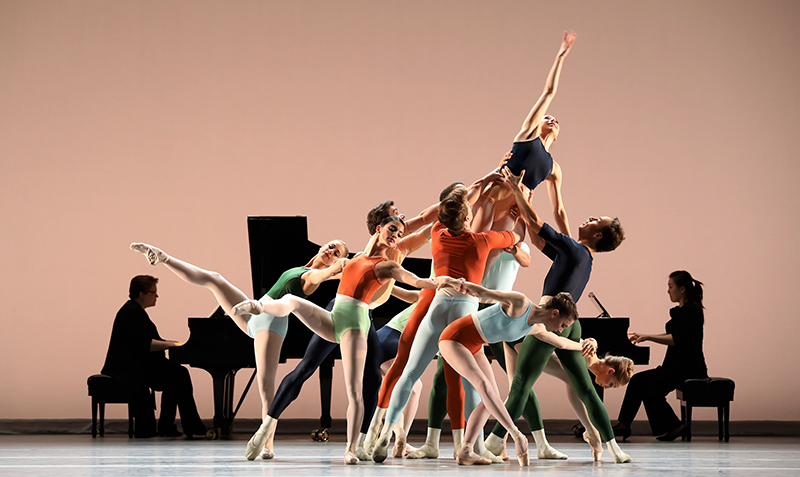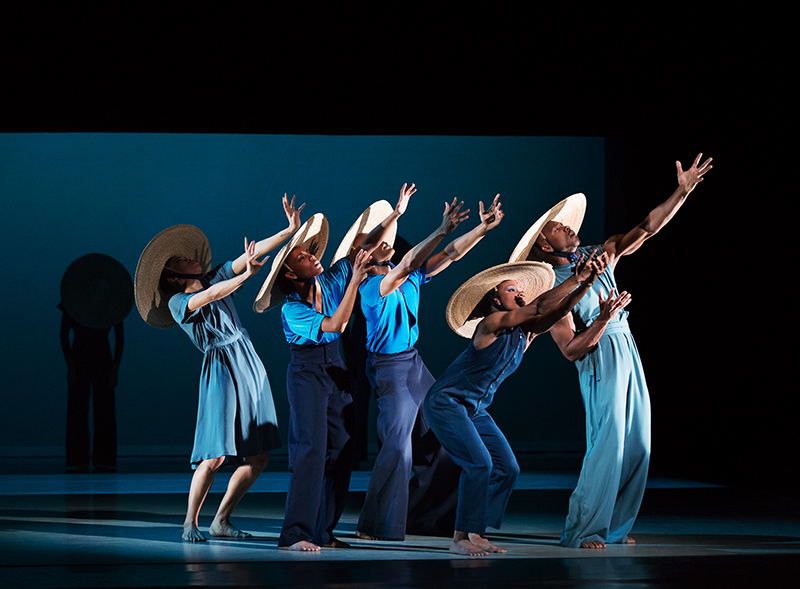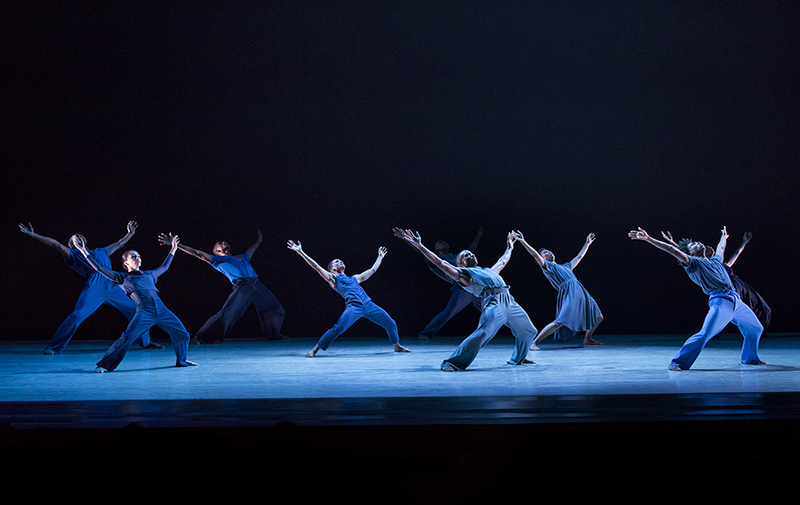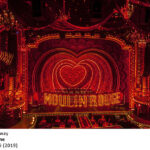
Brandon Stirling Baker Designs Lighting for Top Ballet Companies
Brandon Stirling Baker got what he thought was his dream job early in his career — the opportunity to serve as an associate lighting designer on Broadway. The dream, however, quickly faded when reality set in.
“I didn’t feel like I had a home there and rarely felt appreciated as a fellow designer,” he said. Instead of spending years clinging to the hope that his lot would improve over time, however, he turned to another branch of the performing arts: dance.
He’d had his first taste of lighting for ballet while he was an intern at the New York City Ballet in 2010. When he had his fill of Broadway, he returned to what he soon discovered was the most appropriate outlet for his considerable artistic talent.
“I started working with choreographers, and it suddenly felt like I was working with like-minded people who see me as an artist first,” he said. “I could develop my voice as an artist.”

For the last ten years — essentially, the entire career of this 31-year-old designer — Baker has focused on ballet, becoming the lighting director for the Boston Ballet and a frequent guest designer for the New York City Ballet. His nine-year collaboration with Justin Peck, resident choreographer and artistic advisor of the New York City Ballet, moved Baker’s lighting onto the international stage, leading him to design for leading ballet companies in San Francisco, Miami, Philadelphia, Cincinnati, Houston, Los Angeles, the Netherlands, Hong Kong, Berlin and Dresden in Germany and many others.
These are just samples of Baker’s long list of credits, not the least of which is a 2019 special program at the Guggenheim Museum in New York, “The Choreography of Light,” dedicated to his work as a lighting designer.
“I’m relatively young as a designer, but I have to say the most amazing thing I found is an opportunity to make a difference in this art form,” he said. “There’s a movement of young choreographers really changing the art form, specifically in New York. I’m excited to be part of that.”
Baker discovered this trend during his internships at the New York City Ballet and at Alvin Ailey American Dance Theatre. “I met young choreographers and young composers,” he said. “While most designers were pursuing theatre, I thought, ‘Why can’t lighting provide a new point of view in dance?’”
His fresh perspective on ballet lighting has made Baker one of the most in-demand lighting designers in the world, so much so that every major ballet company has invited him to design for them. “For young designers, there’s an obvious path, but there are other alleys that designers can go through,” he said. “I think that’s how I think about my work as a lighting designer — how can I make a difference.”
How does he do it? “I tend to design from the outside in,” he said. “I like to understand the intention of why the ballet is being performed in the first place. If I understand where and why we are presenting this, it informs my work. I tend to find reference and inspiration in the aesthetics of ballet lighting.”
Choreographer Justin Peck underscored this approach in an interview with The New York Times in early 2019. “What I love about Brandon is how thorough he is, how involved,” he said. Baker is “woven into the development of the piece, and he has a lot of good ideas for the work as a whole, not just how to light it.” Peck and Baker have completed more than 20 pieces together, most recently the world premieres of Bright at Lincoln Center and Reflections at Houston Ballet.
The world of classical ballet has long since achieved a level of maturity, Baker acknowledged, but that doesn’t make its original lighting sacrosanct. “What if the work of Balanchine or Robbins were created today?” he posited. “I can maintain the spirit and the landscape of what they are doing, but I use contemporary sources of light to create the effect. I use moving lights and LED sources, but I’m evoking and creating the visual landscape and the visual clarity that you would see in Robbins’ work.”
He brings this mastery of modern lighting tools to new work as well as the classics. “I’m working with choreographers and composers who are the same generation as me. Justin Peck has become a major force in the world of dance. Justin and I grew up together as artists — we started at very similar places; he was a corps member of the New York City Ballet when I was an intern. It sounds so simple, but the key to success is to be curious. I’m always learning, every day. I’m not afraid to throw out a really massive idea to explore a simple gesture. I believe that all designers should create gestures or strong choices, whether it’s a stage filled with one color, or a landscape of light to create a sunrise, as long as we create a gesture.”

Curating Lighting in Boston
Baker makes his professional home at the Boston Ballet, where he serves as resident lighting designer for this repertory dance company. “The beauty and the somewhat sensitive area in the world of lighting for ballet is that we have living, breathing collections of work, some of which dates back to the 1940s,” he said. “You have to maintain those designs, created by incredibly important names in the world of dance, but it’s my responsibility to make sure that their work is always represented well. I have to approach the work like a curator.”
As a repertory company, Boston Ballet maintains a rep plot that stays the same even as seasons offer dramatically different work. Remounting lighting from the repertory becomes Baker’s daily challenge, translating these designs from instruments available in the 1940s to today’s lighting fixtures — and made more complicated by Boston Ballet’s seemingly incompatible lighting inventory.
“We are the only major dance company in America that has many moving lights in our basic rep plot,” he said. “These are not choices I made; I inherited them, but it is my responsibility to continue telling the story of light and the designers that came before me.” The inventory includes eight High End SolaFrame 3000 luminaires, 18 Vari-Lite VL3500 Wash FX, 24 VL3500 spots, 35 VL1100 tungsten profiles and 250 ETC Source Four ellipsoidals in 14°, 26°, 36° and 50° sizes. A grandMA2 console provides the lighting control. The lighting equipment is provided by 4Wall Entertainment in Boston when Baker specifies what he needs each season.
“The movers are hung on 24-foot-tall towers, with traditional ETC Source 4 ellipsoidals inside,” he said. “Each boom tower has one VL1100 TSD profile on top — these are old lights, but they actually provide a beautiful dimming curve and focus flexibility. There isn’t anything on the market at the moment that can compete with that.”
The push-pull pressure of preserving the past and embracing new technology can be tricky, Baker noted. “We have to move forward, but we have to do it slowly,” he said. “For example, there’s a common misunderstanding that if it’s dance, it must have sidelight, but that’s not always the case. Every dance has its own vocabulary, so the gear I use is specific to that.” However, “a lot of the time, I’m dependent on what’s available.”
Baker has the opportunity to design new work for Boston Ballet as well. Already this year he designed the lighting for ELA, Rhapsody in Blue, choreographed by Paulo Arris and Next Generation, with Lia Cirio’s choreography. He knows these pieces will return to the Boston stage as part of the touring rep — which is both a blessing and a curse, he said.
“In most repertory ballet companies you can see your work performed on a regular basis,” he noted. “It sometimes feels like a different person; in some instances they’re not choices I would make today. As an artist, you grow within your own work. The latest work I’ve done tends to be my favorite.”
Bridging the gap between past and present has become Baker’s unique talent, coupled with his ability to create something entirely new in partnership with today’s choreographers. “I’m deeply inspired by the past,” he said. “But it’s also important to see what’s coming in the future. I think it’s important that people understand the historical context of lighting for ballet and continue to discover a new generation of artists.”
Randi Minetor is an author and freelance writer based in upstate New York.


